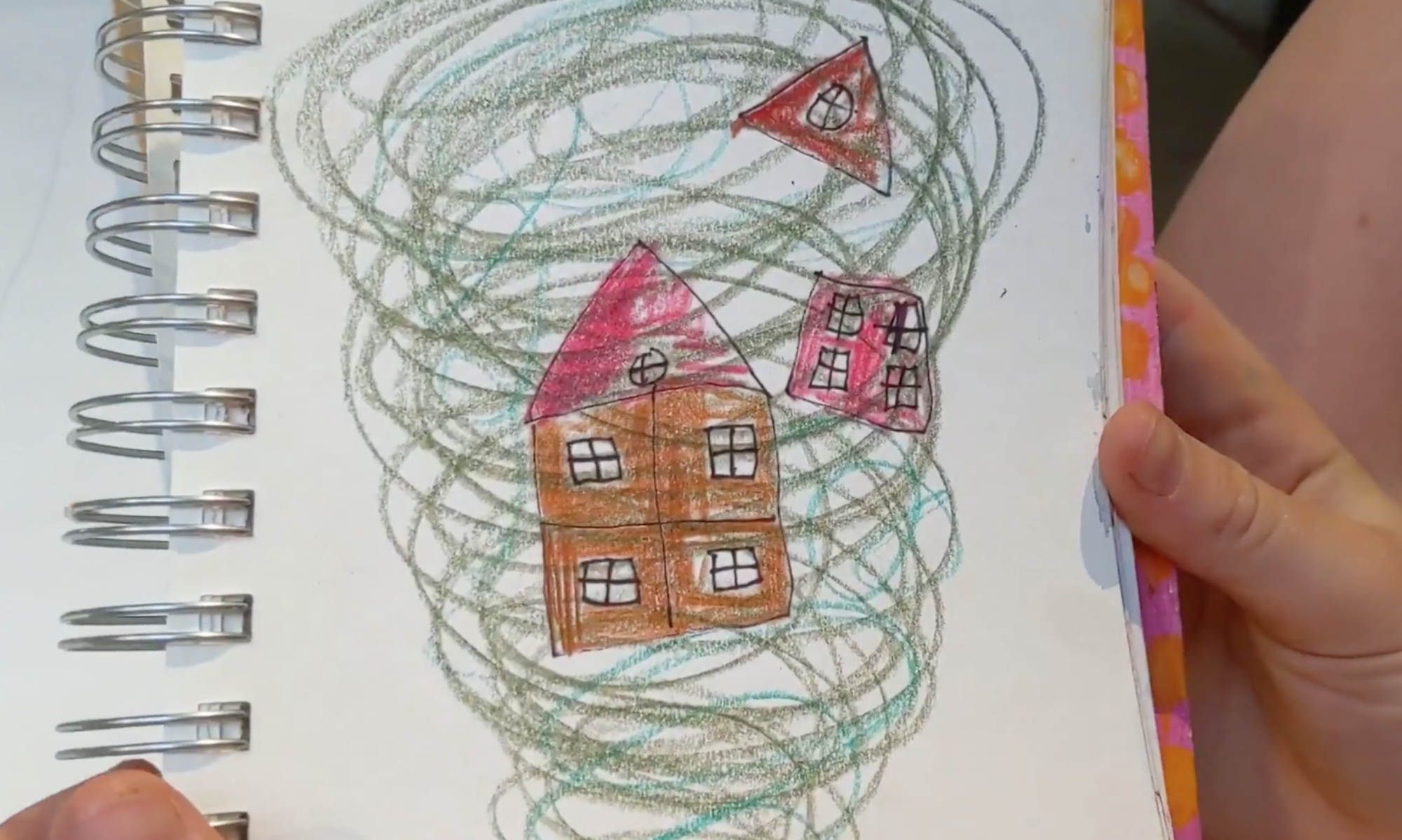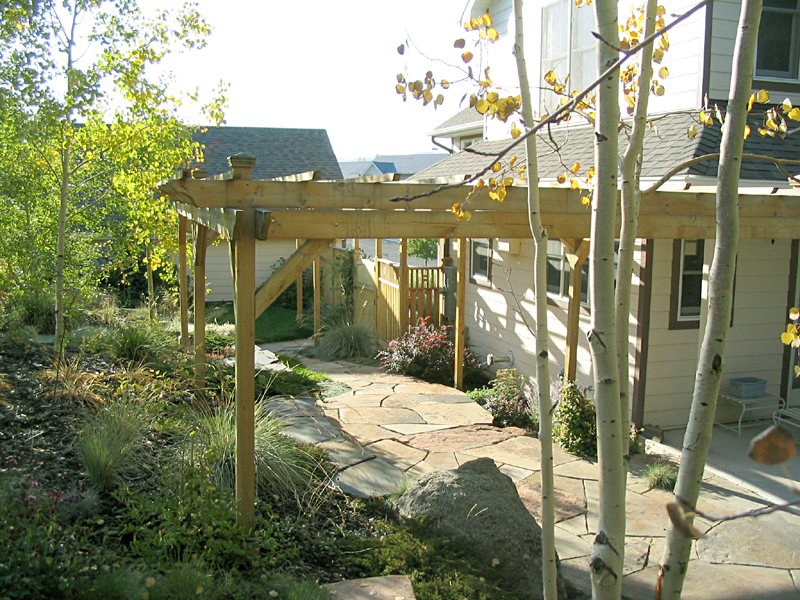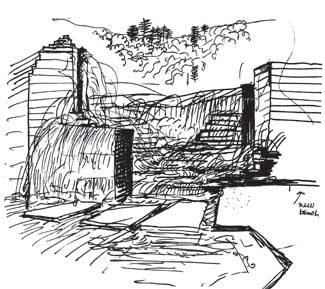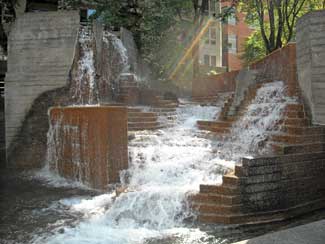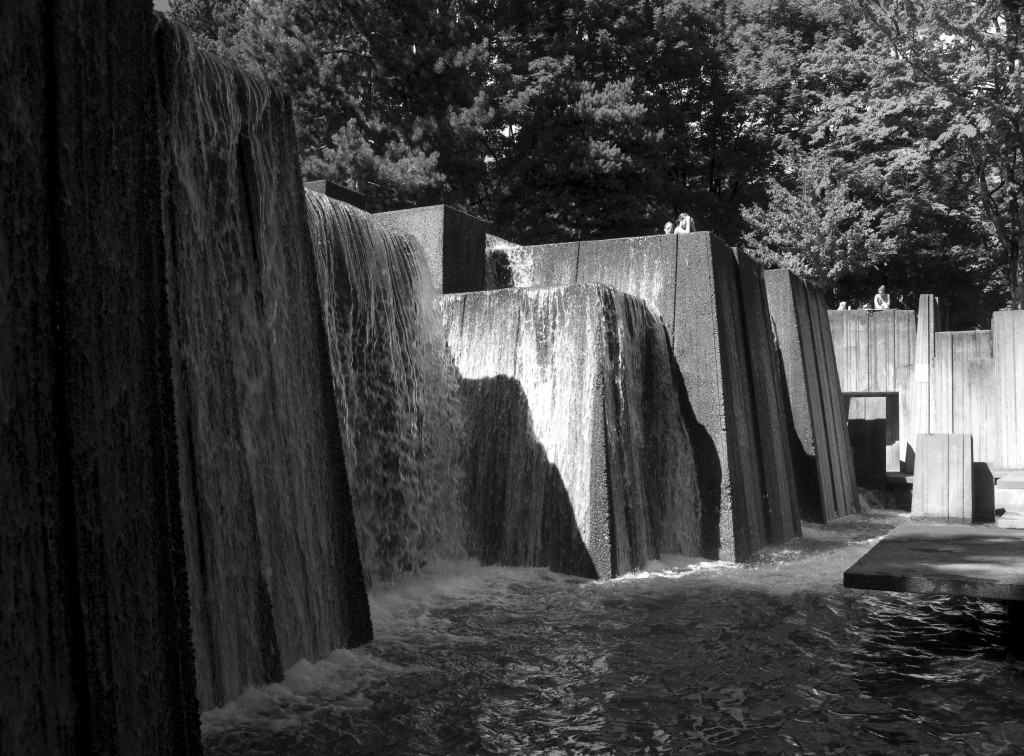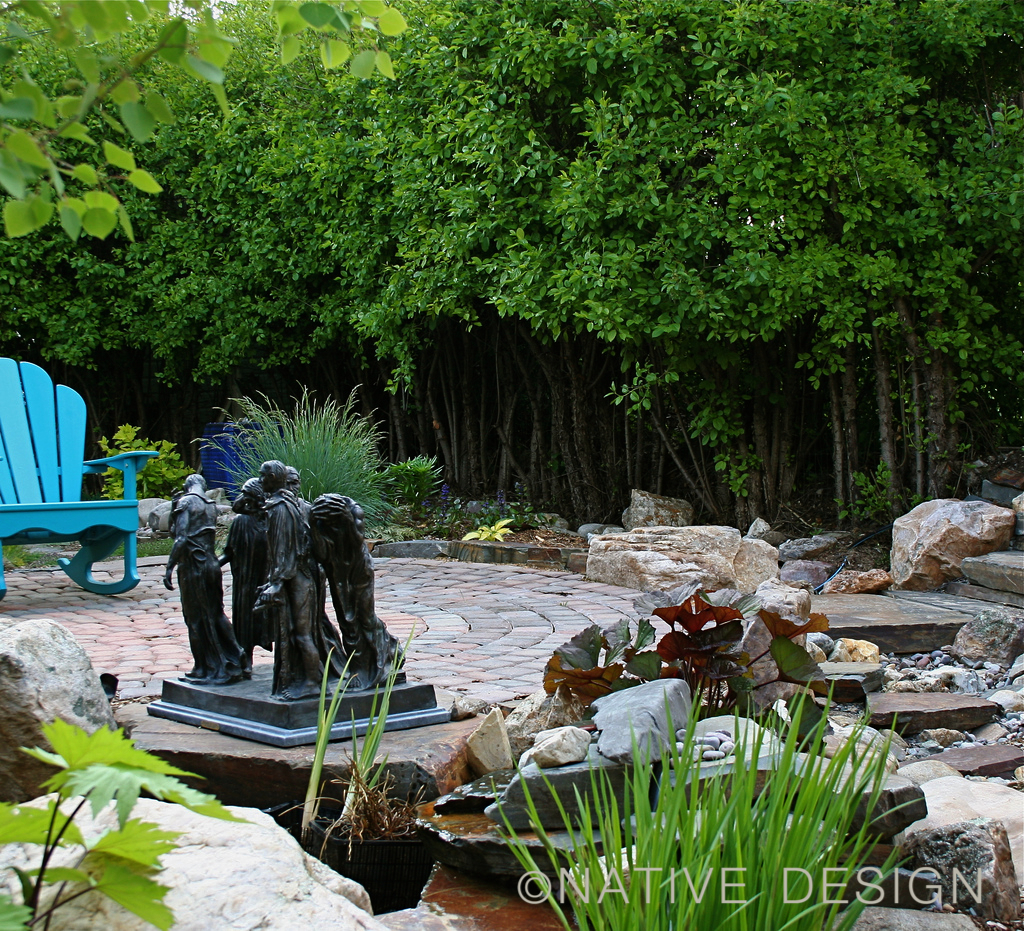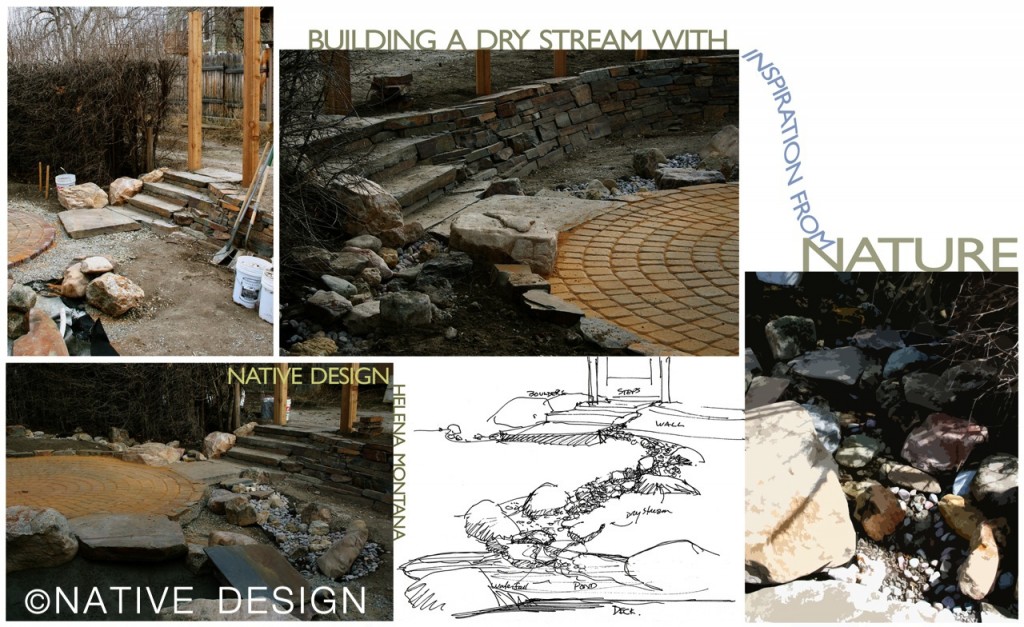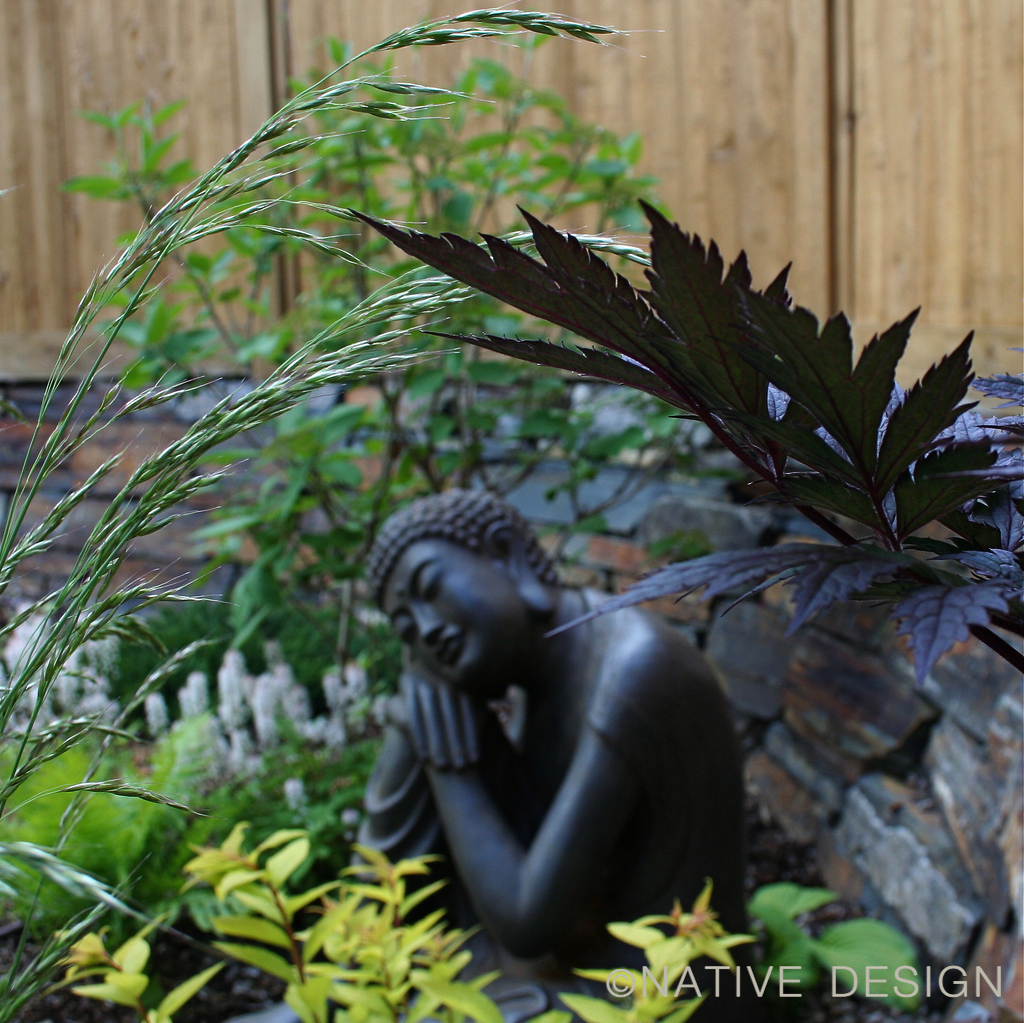World Water Day is tomorrow, March 22, 2013 and Earth Day on April 22 this year. Mother’s Day is on May 12th, a good day to honor our human mothers as well as our Earth Mother.
To celebrate World Water Day, I thought I’d write about water conservation, and include a number of photographs of gardens I have designed around Helena, Montana, using the 7 main priciples of Xeriscaping, or, as I like to say, WaterWise garden design. I hope you find some inspiration in these photos. If you have any questions about the gardens in this post, please email me or comment below. Thanks!

A colorful drought-tolerant vine that also smells delicious and attracts hummingbirds and butterflies, this hardy Honeysuckle vine also create shade and privacy on the back patio.

Front yards do not have to be just a few shrubs and trees surrounded by expanses of thirsty lawn. If you have a small property, make use of the front yard to create usable outdoor rooms. This waterwise garden provides plenty of privacy and several different activity zones in a little over 900 square feet. What was originally an open, dry lawn now has a 6 ft privacy fence, arbor and gate, two patios, a shade pergola and a colorful xeriscaped garden. (see concept sketch below)

More often than not, suburban back yards are just a weekend mowing and watering chore. Why not replace a huge lawn with a series of decks that are not only more attractive and easier to maintain — but add to the square footage of your liveable space? This deck in a WaterWise landscaped back yard provides at least four different “rooms,” one specifically designed for watching sunsets.

A privacy fence creates a whole different feeling in the backyard, making it perfect for quiet visits, reading or shaded dining on hot summer evenings. Birds are attracted to the running water in the pond, and butterflies feed on flowering perennials and vines.

Xeriscapes can include water features. Here, an overflowing urn appears to flow into a dry stream bed. The bright blue color and sound of bubbling water create a focal point in this garden.

Pondside plantings include native irises, corkscrew rush and tufted hair grass which will mature to a graceful arching clump grass

Xeriscaped front yards do not have to be all gravel, juniper, yucca and potentilla. In fact, a well-designed xeriscape can look much more attractive and welcoming than a mostly-lawn entry garden. Here, sumac, hosta and native ferns share a plant bed next to the front porch, where a Japanese “rain chain” directs roof runoff into a drainage pipe disguised by a dry stream bed of black rocks. Spilling onto the stone paved front patio are drought-tolerant groundcovers such as creeping thyme, artemisia and snow-in-summer.

A xeriscaped entry garden with just the smallest circular lawn for a cool green sitting spot. The rest of this front yard is slate walkways and patio, a Mediterranean-style gravel garden, and planted terraces with aspens for shade and privacy
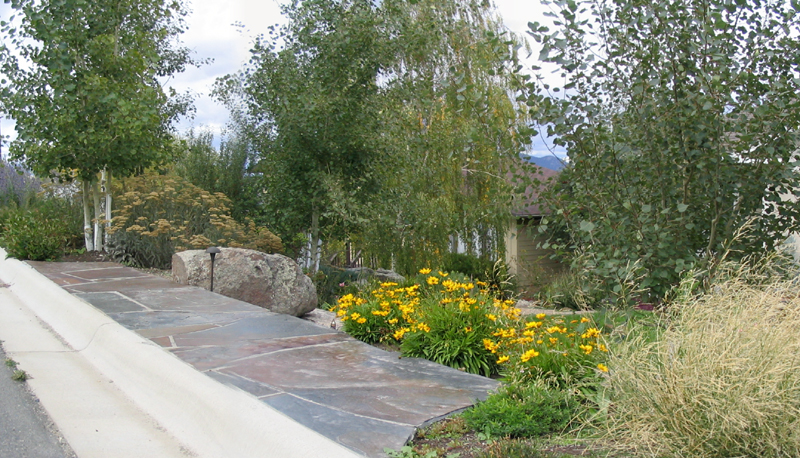 Slate paving provides a comfortable spot for guests to approach the front garden of this home. Steps leading down into the entry garden are flanked by aspen trees, daylilies, ornamental grasses and colorful flowering perennials.
Slate paving provides a comfortable spot for guests to approach the front garden of this home. Steps leading down into the entry garden are flanked by aspen trees, daylilies, ornamental grasses and colorful flowering perennials.

A grand entry experience greets guest to this home built on a steep slope above the road. There is no lawn at all in this xeriscaped garden. Instead the slope is tamed by a series of stone terraces and slate steps that create lots of liveable space on an otherwise unusable slope. The dramatic focal point of this planting is Karl Foerster Feathered Reed Grass.

Enter this driveway through a small grove of native aspens mulched with smooth river rock. The aspens frame visitor’s view of this grand brick home in the Helena Valley.

A drainage problem prompted design of this dry stream bed to handle roof runoff during storms. Boulders and pebbles meander through drought-tolerant shrubs and perennials with a clump of aspens. Daylilies, Siberian Iris, Coreopsis, Potentilla, Russian Sage and Arctic Willow make a striking accent planting near the front door of this home.

Xeriscapes can include vines such as this Hops vine to cover unsightly fences and block walls, or to create shade and privacy as in this photo. Here, the hops grows on a trellis on the west side of a porch, creating a cool spot to sit outside on hot summer evenings.

In our hot, dry Helena summers, shade is an important landscape element and fits well with any xeriscape design. Here, a pergola attached to the south side of this home provides shade not only for the stone patio, but also for some of the plants in the beds around it. Honeysuckle and Clematis vines are planted at the base of each post to eventually grow up and over the pergola. Aspens planted in clumps augment the pergola’s shade as they mature.

A cedar pergola planted with vines shades this stone patio and bench-height retaining wall. Xeriscape principles followed in this design include thoughtful planning, low-volume irrigation, drought tolerant plants located in groups according to their water requirements, low-maintenance, improved soil, shredded bark mulch to retain soil moisture, extremely small lawn area and a native grass meadow.

A xeriscaped back yard has two circular stamped-concrete patios shaded by a small aspen grove, stone terraces planted with native drought-tolerant plants and a very small lawn area.

This could be a front garden or back yard dining area. There is no lawn at all in this xeriscape. Instead the homeowners chose to install a paved patio surrounded by this stone retaining wall. Paved area tend to retain heat and can get uncomfortable in our hot summers. This patio has lots of cool shade provided by aspens and other trees, vines climing the walls and a cooling water feature that splashes down the stone wall, crisscrosses the patio and spills into a small reflecting pool. Plants are grouped according to the sun and water requirements, making watering and maintenance easier.

An alternative to lawn grass: these pavers are spaced a few inches apart with grass planted between them. This allows rainwater to permeate as well as gives visual interest and breaks up the expanse of hard material.

A native grass meadow was planted on this slope after construction of the home had disturbed the soils. The designer used all xeriscape techniques and mostly native plants to connect this contemporary home to it’s natural surroundings in the hills south of Helena.

An alternative to the big front lawn: a native grass meadow with boulder terracing punctuated with drought-tolerant mostly-native shrubs, trees and perennials.

To reduce the amount of bluegrass lawn in this front yard, the owners of this Helena Valley home put in large, bermed plant beds with many native plants such as aspen, potentilla, juniper, dwarf pine and artemisia. The soil was improved before planting and under the river rock mulch is a low-volume drip irrigation system

To reduce the amount of bluegrass lawn in this front yard, the owners of this Reeders Village home installed several large, mulched plant beds with drought-tolerant plants such as amur maple, flowering crab, potentilla, blue fescue, blue oat grass, rocky mountain juniper, dwarf spruce, snow in summer and artemisia. The soil was improved before planting and under the mulch is a low-volume drip irrigation system.

This Lakeside home replaced half of it’s thirsty bluegrass front lawn with a meandering gravel path, stone steps and a perennial garden under the mature trees. This is how visitors approach the front entry: much more welcoming than it was before these changes.

One principle of Xeriscaping is to group plants into zones according to their growing requirements, especially water requirements. Here, an isolated bed of shade-loving plants separates a lower patio from the upper one. Hosta, Maiden Pinks, Lady Fern and Coralbells thrive in the same bed.
To be continued … check back for more photos, more details and more inspiration!
